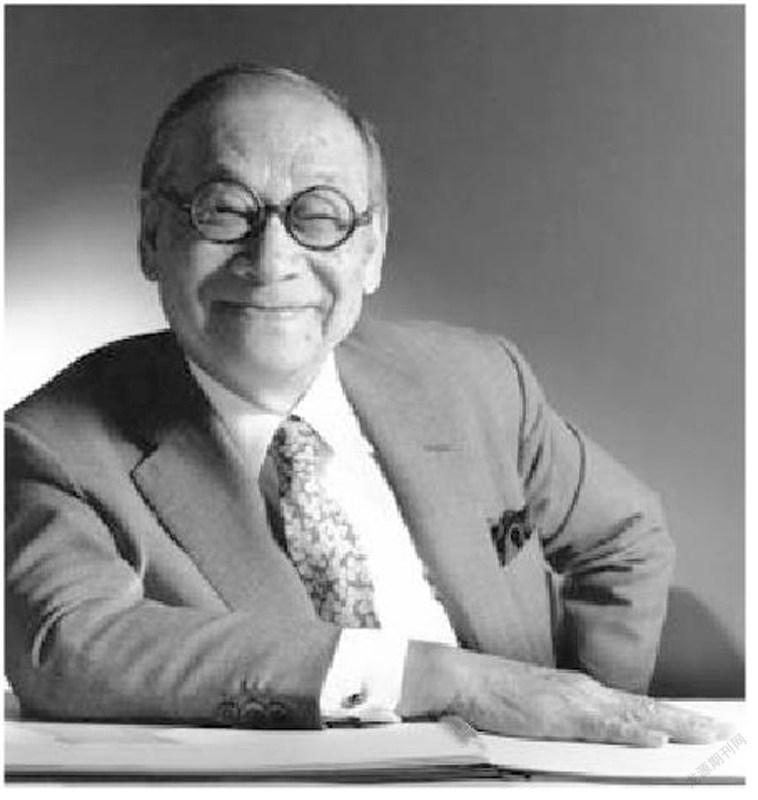I. M. Pei and his most iconic buildings建筑大师贝聿铭
2022-06-08王涛涛
王涛涛


1Born in China, I. M. Pei (1917—2019) grew up in Suzhou and Shanghai before deciding to move to the United States to study architecture. Pei was praised for giving “this century some of its most beautiful interior (内部的) spaces and exterior forms”, said the jury of the Pritzker Architecture Prize, which he received in 1983. Below are four of his most iconic buildings.
Le Grande Louvre
2In 1981, the newly elected French president, Fran?ois Mitterrand, launched a cam-paign to renovate cultural institutions throughout France. One of the most advantageous of those projects was the renovation and remodeling of the Louvre. In 1983, after touring Eu-rope and the United States, President Mitterrand commissioned Chinese?American archi-tect I. M. Pei. It was the first time that a foreign architect had been enlisted to work in Le Grande Louvre.
Bank of China Tower
3When commissioned to design the Bank of China Tower on an intricate inland site, I. M. Pei was requested to create an unavoidably tall unique headquarters in a typhoon?prone region that would represent the aspirations of the Chinese people. The solution as-similates architecture and engineering simultaneously, involving an asymmetrical tower that stands against both the skyline and the street.
Suzhou Museum
4Founded in 1960 and originally located in the Zhongwang Mansion of the Taiping Heavenly Kingdom (太平天国), Suzhou Museum has been a highly?regarded museum with a number of significant Chinese cultural relics. The new Suzhou Museum designed by I. M. Pei was completed in October 2006. Not only does the museum become a monumental(意义深远的) design building in Suzhou, but also a significant construction, merging the traditional southern Chinese architecture style and modern aesthetics.
JFK Presidential Library
5In 1963, then President John F. Kennedy viewed possible sites for a presidential li-brary and museum to be built in his name. After several years, the John F. Kennedy Presi-dential Library was finally finished and dedicated on October 20, 1979. Architect I. M. Pei's signature geometric shapes of concrete steel and glass created an appropriate stately monu-mentality. A juxtaposition (并置) of spaces and light quality along with a defined and clear circulation (循環) creates a logical story?line of its namesake.
ReadingCheck
Ⅰ. Choose the best answers according to the text
Detail 1. What can we learn about I. M. Pei from the text?B655FA99-B6E6-4F79-8B06-359F9941843D
A. He was born in Suzhou on May 26, 1917.
B. He studied architecture both at home and abroad.
C. He won the Pritzker Architecture Prize for Le Grande Louvre.
D. He preferred concrete steel and glass in his design.
Detail 2. Which building requires to show the willingness of the Chinese people?
A. Le Grande Louvre. B. Bank of China Tower.
C. Suzhou Museum. D. JFK Presidential Library.
Detail 3. Which building best suits people who enjoy both traditional and mod?
ern Chinese aesthetics?
A. Le Grande Louvre. B. Bank of China Tower.
C. Suzhou Museum. D. JFK Presidential Library.
Inference 4. In which column is this text likely to appear?
A. Adventures. B. Celebrities.
C. Current affairs. D. Historic events.
Ⅱ. Discussion
What other great famous Chinese architects and their designs do you know? Please search for more information about them and share it with your classmates.
LanguageStudy
Ⅰ. Discover the useful structure in the text
not only...but (also)...意为“不仅……而且……”,用来连接两个表示并列关系的成分,also可以省略。
Not only does the museum become a monumental design building in Suzhou, but also a significant construction, merging the traditional southern Chinese architecture style and modern aesthetics. 這座博物馆不仅成为苏州的一座纪念性设计建筑,而且是一座融合了中国南方传统建筑风格和现代美学的重要建筑。
Ⅱ. Complete the following phrases according to the text
1. 成长_________up 2. 因……而受到赞美 be______for
3. 文物 cultural__________4. 建筑风格 architecture__________
5. 现代美学 modern________B655FA99-B6E6-4F79-8B06-359F9941843D
